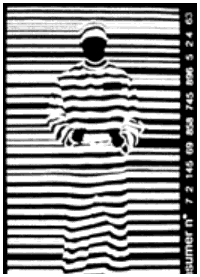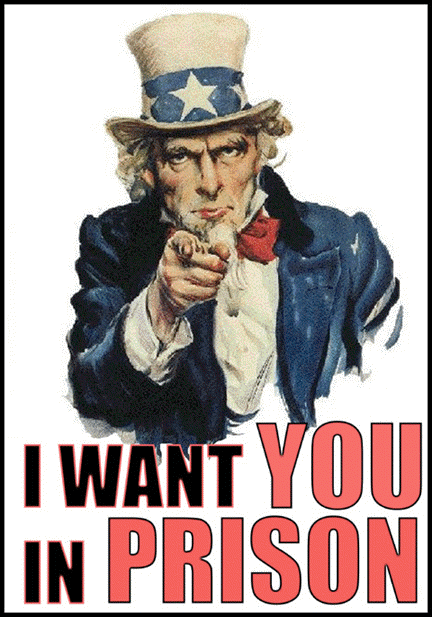Loïc Wacquant
(Minnesota)

- Putting people in jail in the United States has become the nation's "largest program for the poor;"
- Federal, state and local corrections administrations employ almost three-quarters of a million people. This makes it America's "fourth largest employer, behind Wal-Mart ... and just ahead of General Motors;"
- Republican calls for "small government" do not apply to prisons --- and the annual payroll for corrections institutions now exceeds $10,000,000,000;
- One of the great provokers of the "war on crime" is low-cost television shows, also known as "drive-by journalism." There are America's Most Wanted, Unsolved Mysteries, and Cops which feed the public's ever-mounting fear of crime, despite the facts; which are,
- According to FBI Uniform Crime Statistics, crime rates in the United States have actually continued to drop, during the same time period that ABC, NBC, and CBS have quadrupled the number of crime stories on their evening news programs: "typically five stories per evening ... 200% more than even ten years ago;"
- The antidrug policy of government acts as "spear and screen" for a war "against persons perceived as the least useful and potentially most dangerous parts of the population: the jobless, the homeless, the paperless immigrants, beggars, vagrants and other social rejects;"
- African-Americans represent 13 percent of consumers of drugs, about the same figure --- proportionally --- as for whites. But "in ten states, black men are twenty-five times more likely than white men to be sent to prison on a narcotics charge." In Illinois, minorities make up "70 percent of the drug arrestees and 86 percent of those admitted to state prison."
Fortune Magazine in an article entitled "Getting Rich with America's Fastest Growing Companies," noting that CCA's stock had appreciated 746% in a recent three-year time period. (One of the sources of their new-found prosperity is the fact that their employees are not unionized, while those of state or federally run prisons almost always are.) Prisons are also no longer subject to NIMBY --- "not in my back yard" --- fears. "Prisons do not use a lot of chemicals, do not generate noise or atmospheric pollutants and do not lay off workers during recessions."
Prisons of Poverty reports that
- Incarceration thus presents itself as a prosperous industry with rosy prospects, and with it all those who interests are tied to the great lockup of the poor in America.
 Thus Wacquant offers the novel thesis that the War on Poverty has morphed into a war on the poverty-stricken. The ghetto was once a "ethnoracial prison," warehousing the poor, the black and other minorities. Now, prisons have become the de facto ghettos. One in three black men between eighteen and twenty-nine "are either incarcerated, under the authority of a judge or parole officer ... or waiting to appear before a criminal court."
Thus Wacquant offers the novel thesis that the War on Poverty has morphed into a war on the poverty-stricken. The ghetto was once a "ethnoracial prison," warehousing the poor, the black and other minorities. Now, prisons have become the de facto ghettos. One in three black men between eighteen and twenty-nine "are either incarcerated, under the authority of a judge or parole officer ... or waiting to appear before a criminal court."
The author sees a new "structural and functional symbiosis" between ghetto and prison. While the men are shipped off to jail, the women, (many of whom are public-aid recipients), become more and more subject to close supervision, with "a strict monitoring of their behaviors ... in matters of education, employment, drug consumption, and sexuality." In Michigan,
- welfare recipients must submit to periodic drug testing, as do convicts on parole or probation...
Testing is done on both prisoners and ADFC recipients "by the state's department of corrections in offices where they mingle with parolees."
Wacquant presents us with a fascinating shape-shifting picture of prisons, minority life, and the life of the very poor ... as well as a penetrating view of the use of anti-drug laws to further the goals of our commercially driven culture. Some 6,500,000 citizens of the United States are now "under correctional supervision;" a huge percentage of the newly arrested --- 85% in some states --- are subjected to mandatory incarceration for non-violent (usually drug-related) offenses. The penal system has thus supplanted the ghetto --- and both are driven by terrorism in its most virulent form. Here I am not speaking of the terrorism that erupted in one corner of the country in 2001; rather, I speak of the terrorism fomented by those low-cost shows of dubious morality, those programs cynically referred to by TV executives as "criminal entertainment." Wacquant's message is controversial, scary, and wonderfully pertinent.